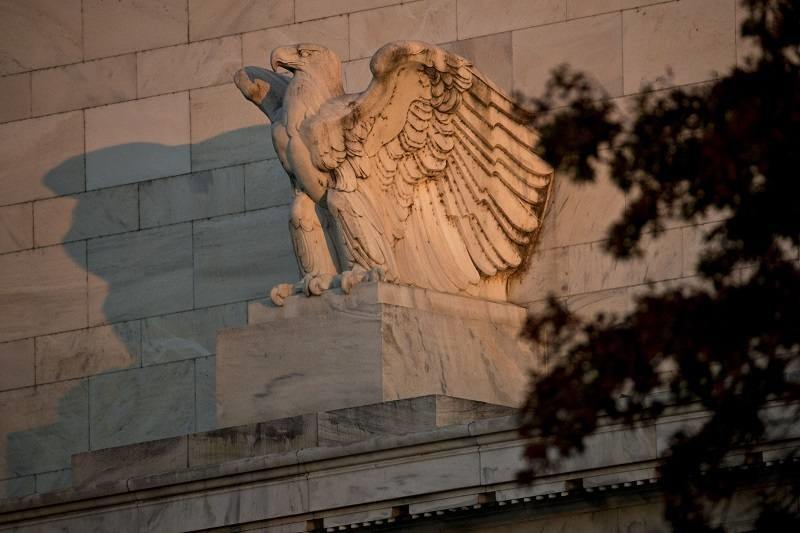Cooler inflation takes next Fed rate-hike size down to the wire

An eagle sculpture on the facade of the Marriner S. Eccles Federal Reserve building in Washington, D.C.
11:39 JST, August 11, 2022
Economists are divided on whether slower U.S. consumer-price growth for July means the Federal Reserve could ease its aggressive rate-hiking program, making 75 basis-point moves less definite.
The consumer price index increased 8.5% from a year earlier, cooling from the 9.1% June advance that was the largest in four decades, Labor Department data showed Wednesday. Prices were unchanged from the prior month.
Markets are now pricing in the likelihood of a 50 basis-point increase in September rather than 75 basis points, and less than 100 basis points of hikes over the next two meetings.
“Whether it’s 50 or 75 in September is probably going to go down to the wire,” said Derek Holt, an economist at Scotiabank. “Right now, I’d give the bigger nod to the intensifying tightness in the job market that fans concern over wage-driven catalysts to future inflation versus the latest CPI print, but it’s premature to judge the September move.”
The central bank’s policy-setting Federal Open Market Committee raised its benchmark rate by three quarters of a percentage point in July for the second straight month, marking the most aggressive back-to-back increases in more than a generation to tame inflation back to its goal of 2%. The FOMC next gathers Sept. 20-21.
“Both headline and core CPI inflation were surprisingly soft in July, but with recent wage and productivity data signaling price pressures ahead, the Federal Reserve is unlikely to step back from the inflation fight just yet,” economists Anna Wong and Andrew Husby wrote in a note for Bloomberg Economics. “Another soft print is likely in August as gasoline prices have continued to decline. Market perception of an imminent dovish Fed pivot has eased financial conditions, complicating the central bank’s task to tamp down inflation and raising the risk it will have to reset market expectations.”
Fed Chair Jerome Powell told reporters after the July 27 decision that officials could increase rates by the same amount at the next meeting — depending on readings from the economy between now and then — though they would slow at some point in the future.
Fed officials who’ve spoken in recent days have effectively pushed back against a narrative in financial markets that policymakers are envisioning a pivot away from tightening amid evidence of a turn in the economy, saying that returning price growth to the goal of 2% remains a priority.
The July CPI prince “makes it more likely that our call will be right for the September FOMC — a hike of 50 basis points,” Michael Pond, the head of inflation strategy at Barclays Capital Inc., said in an interview on Bloomberg Television Wednesday.
“This is a necessary print for the Fed, but it’s not sufficient,” Pond said. “We need to see a lot more. You can think about this print as sort of like the weather — it’s better today than it has been over the past few days. But it’s still summer. There’s still a lot of humidity out there. It’s not great. So it’s in the right direction. But we’re certainly not not there yet.”
For Diane Swonk, the chief economist at KPMG, the Fed is now hedging against risk of future supply shocks as well as combating current inflation and will likely favor a 75 basis-point increase.
“The Fed is no longer willing to rest on their laurels on a one-month move,” she said. “The greater risk for the Fed is to stop too soon than stop too late. It will take a lot more cooling than this for the Fed to shift its decision rule, although in this economy, September seems an eternity away.”
Core inflation, excluding volatile food and energy, rose 0.3% from June and 5.9% from a year ago. While those figures were better than expected, Fed officials likely to be concerned at how far they are from the 2% inflation goal.
”Core inflation remains on an upward trajectory due to rising housing rental costs and service-sector inflation pressures,” said James Knightley, chief international economist at ING Financial Markets. “The case for a third consecutive 75 basis-point rate hike in September remains strong and will likely recover if we are right on core inflation moving higher in August.”





